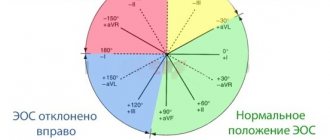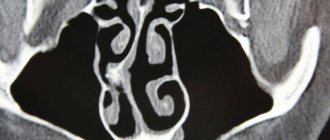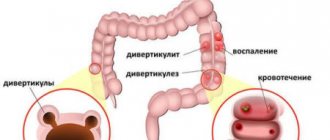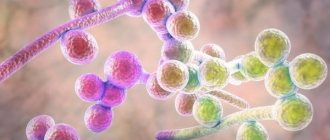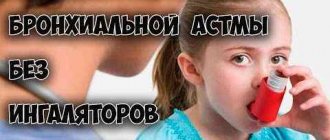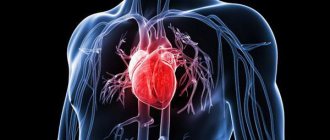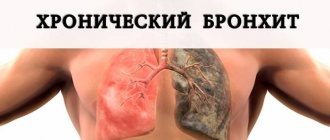0
9621
Baby heat rash is an unpleasant problem known to almost every mother. It occurs as a result of excessive activity of the sweat glands, as a result of which sweat does not have time to evaporate from the skin and leads to irritation. However, sometimes this pathological condition also occurs in adults. In this case, the problem can be quite serious. After all, it is often caused by various diseases. Therefore, it is important to be able to distinguish between the types of heat rash and know when to see a doctor.
What does prickly heat look like in children?
The process of thermoregulation involves secreting sweat to cool the body when overheated. In newborn babies, the secretion produced by the sweat glands does not come out and clogs the pores. Because of this, irritation appears on the body - pink and red spots. It may take the form of a small rash with watery contents or appear in large spots. Miliaria is localized in places with thin skin - the neck, back of the head, elbow and popliteal folds, buttocks, inguinal folds.
Signs of prickly heat
It is quite simple to recognize a sweat rash by visual signs - numerous spots and blisters will cover a significant area of skin in the armpits, on the stomach, chest, on the bends of the elbows and knees.
This disease is not transmitted to other people and does not pose a great danger. If prickly heat occurs frequently and is caused by excessive sweating, you should definitely consult an endocrinologist, since endocrine disorders often provoke such phenomena. Cardiovascular pathologies and nervous system disorders should not be ruled out.
Causes
The physiological explanation for prickly heat in children lies in the structural features of the epidermis. A newborn baby differs from an adult in having thin and delicate skin. Its layers contain many small blood vessels. Excessive moisture expands them and leads to increased blood flow to the area. The skin becomes inflamed and a characteristic rash appears on it.
Children prone to allergic reactions and dermatological diseases are more susceptible to developing prickly heat on the skin. Increased sweat production is observed in overweight babies and with disorders in the gastrointestinal tract. Prematurity and artificial feeding also negatively affect the stabilization of the thermoregulation process.
Parents, by their actions, can provoke the appearance of a red rash on the body of a newborn child. The reasons for this are:
- Incorrect care. Staying in one diaper for a long time and untimely bathing lead to the proliferation of pathogenic microorganisms on the baby’s body. Their waste accumulates on the skin, mixed with dead epithelial cells and dust particles. This mass prevents sweat from escaping and further evaporating.
- Tight swaddling. Many parents use the “grandmother’s” method and wrap the baby tightly in diapers. In this state, air does not reach the epidermis, and even slight sweating irritates it. It is tight swaddling that leads to the appearance of prickly heat in an atypical area - on the feet .
- Applying fatty creams in the summer. After treatment, a greasy film remains on the skin. It prevents the penetration of air and disrupts the heat transfer process. Fat creams can only be used in winter, when the epidermis needs hydration. In summer, it is better to use water-based products with light moisturizing effects. They are quickly absorbed and protect against drying out.
- Exposure to elevated temperatures. In a hot room, the likelihood of irritation increases. Summer heat and the condition of the child in diseases that occur with hyperemia are also fundamental factors in the development of prickly heat.
It is important to consider that prickly heat can be of a secondary nature in pathologies such as rickets and exudative-catarrhal diathesis.
Prognosis for treatment of the disease, possible complications and negative health consequences
Miliaria itself is not a dangerous or life-threatening disease. With timely treatment of the disease, it goes away in a period of several days to two to three months. The intensity of skin healing is largely influenced by the age and health of the patient. It is known that people suffering from eczema, psoriasis and diabetes mellitus have a much harder time with heat rash, since their regeneration processes are impaired. This also explains the high incidence of secondary complications of the disease in this group of patients.
The victim’s compliance with all medical recommendations and partial lifestyle changes during the treatment period also have a special impact on the victim’s recovery. In his practice, the author happened to encounter a woman who suffered for a long time from a severe form of prickly heat. During the summer period, rashes were observed on almost the entire surface of her body, which brought serious discomfort to the patient. During the treatment period, the doctor prescribed her to completely stop drinking alcohol, treat her skin regularly, and not swim in public waters for at least a month. Unfortunately, the patient did not comply with medical recommendations and continued to adhere to her usual lifestyle. Alcoholic drinks slowed down the effect of the drugs, and swimming in open water led to infection. The woman was hospitalized in the department of purulent surgery with ulcerative lesions of the skin. After a long course of antibiotic therapy, she managed to get rid of the disease, but several deep scars remained on her body.
What complications may occur in patients with prickly heat:
- The formation of tiny skin cracks that merge into larger ulcers. Often, several elements of prickly heat can connect with each other, which leads to the formation of deeper and more massive damage. This is usually caused by improper skin care or the use of hard washcloths or pumice stones. Treatment for such a complication does not differ from standard treatment for prickly heat.
- Attachment of fungal infections. This disease often occurs when rash elements are located in the area of the feet and palms. Various fungi (molds, yeasts, dermatophytes) penetrate through damaged skin, which grow and form a greenish, yellow or brown coating on the inner surfaces of the extremities. This disease most often develops in people with reduced immunity. The disease is treated with antifungal drugs.
- Formation of bacterial microflora in skin wounds. Often, when scratching, staphylococcus, a pathogenic microbe that contributes to the development of purulent-necrotic diseases, is introduced into the area of miliaria elements. That is why, in advanced forms of the disease, the addition of abscesses, phlegmons and boils is often found. With improper treatment of purulent diseases, the development of sepsis is possible - severe systemic damage to the entire body: this is why people with this complication must be immediately hospitalized. Treatment is carried out in a surgical hospital with the mandatory use of antibacterial agents.
- Formation of scars on the surface of the skin. Deep elements of miliaria, affecting the lower layers of the epidermis, heal much worse. Often, in their place, small deforming screeds are formed - scars or scars that can greatly spoil the appearance. To prevent this complication, various means of physiotherapy and special healing creams and ointments are used.
Photo gallery: possible negative consequences of the disease
The fungus develops when microorganisms penetrate into cracks left by prickly heat.
Often the addition of staphylococcus is characterized by massive skin damage
Scars occur when the skin is deeply damaged
Symptoms and types
Most often, the symptoms of prickly heat manifest only as skin rashes that do not cause discomfort to the child. Small whitish bubbles appear in places of irritation. But in advanced cases, the baby feels burning and itching, becomes moody and sleeps poorly.
Depending on the nature of the rash, prickly heat is divided into types:
- Crystalline prickly heat. The rash covers the entire body or individual parts of it. Localization on the face appears in the forehead area, on the back - closer to the shoulders. Bubbles with a diameter of 1 mm eventually merge into one large spot. After the shell breaks, it dries out and becomes crusty. If pathogenic bacteria get into the wound, there is a risk of it suppurating.
- Miliaria rubra. The variety is characterized by the appearance of single bubbles (diameter 2 mm) with a cloudy liquid inside. The perimeter of each rash is outlined by an inflamed, uneven red outline. With prickly heat, the rash does not merge into a single spot, but causes burning and itching. These symptoms intensify with each case of excessive sweating. In children, prickly heat appears in the intercostal cavities and buttocks in areas of increased friction from diapers.
- Papular miliaria. This species develops due to high environmental humidity. Bubbles up to 2 mm in diameter are flesh-colored. They occupy a fairly large area of skin on the legs or sides. The affected areas are characterized by increased dryness and peeling. The rash is itchy and itchy.
- Deep heat rash. After getting rid of the red type of the disease, the affected areas continue to experience dry skin for some time. Sweat glands need time to stabilize their functioning. If during this period the epidermis is again exposed to increased temperatures and humidity, then there is a risk of developing prickly heat. The rash can reach a size of 3 mm, its color differs slightly from the color of the skin. After the body naturally cools, it disappears.
The danger of prickly heat lies in the possible addition of a secondary infection. If the bubbles contain white or yellow liquid, then after opening them, weeping wounds will appear on the child’s body. Their treatment will take a long time and requires the use of antibacterial therapy.
The main manifestations of prickly heat and features of the disease
Often the disease appears in patients after intense sweating. With a single violation of hygiene rules, the disease can bypass you, but if you do not cleanse your skin regularly, a rash will soon appear on it. The main manifestations of the disease include:
- the appearance of a rash in places where the sweat and sebaceous glands are most active;
- unequal nature of inflammatory elements (in the stage of healing and open wound);
- intense itching and burning;
- sleep disturbance;
- formation of ulcers and crusts.
If a fungal or bacterial infection is added to the course of prickly heat, general symptoms also appear. The following signs are characteristic of complications of the disease:
- temperature rise to 38 degrees;
- nausea, vomiting;
- headache;
- discomfort in the damaged area of the skin;
- weakness, lethargy and loss of appetite;
- weight loss;
- nervousness and irritability.
Table: differential diagnosis of prickly heat and other diseases
| Comparative feature | Prickly heat | Acne | Chicken pox | Allergy | Herpes |
| Nature of the rash | Red rashes on discolored skin | Large single rashes filled with pus | The stages of stain, bubble with contents and crust pass through. | Bright scarlet rash on a white background | Bubbles with whitish contents |
| Arrangement of elements | In the natural folds of the body, on the back and hips | On the face, neck, chest and back | Evenly over the entire surface of the body | At the place of use of the allergen (cosmetics, medicines) | On the lips and mucous membranes |
| Events preceding the disease | Overheating, wearing clothes made of synthetic materials | Violation of the rules of personal hygiene and makeup removal | Contact with someone with chickenpox | Application of a new product (food, medical) | Weakened immune system (recent infection) |
Treatment methods for prickly heat in children
When severe irritation appears on the skin of a baby, parents think about how to treat prickly heat and how to help him get rid of discomfort. These requests should be answered by a pediatrician after examining the skin of a small patient. And based on it, he will prescribe a suitable remedy.
Ointments and creams against prickly heat
The most effective drugs to combat heat rash in children are described in the table.
| Drug name | Release form | Active substance | pharmachologic effect | Application diagram |
| Tithes | ointment of white or yellowish color with a viscous uniform structure | zinc oxide | anti-inflammatory, antiseptic, absorbent | 3 times a day |
| Zinc ointment | ointment 10% in jars and tubes | zinc oxide | astringent, adsorbent, antiseptic | 3 times a day |
| Bepanten | Cream 5% in tubes of various volumes | dexpanthenol | wound healing, restores and accelerates skin cell regeneration | treating inflamed areas with every diaper change |
| Sudocrem | cream in a polypropylene jar | zinc oxide, benzyl alcohol, benzyl benzoate, benzyl cinnamate | anesthetic with healing effect | up to 6 times a day |
| Drapolene | homogeneous pink cream in a tube | benzalkonium chloride, cetrimide | antiseptic, disinfectant, antimicrobial | every diaper change |
| Pantestin | gel in tube 15-30g | dexpanthenol, miramistin | antiseptic with wound healing and antimicrobial effect | every time you change diapers |
Application of the preparations should occur on clean and dry skin. The course of treatment is determined by the pediatrician, but most often ointments and creams are used until the heat rash completely disappears. If prickly heat has led to a secondary infection, then antibacterial drugs may be prescribed.
Solution for prickly heat
To reduce the severity of rashes in children, products with a mild effect on the skin are used:
- Soda solution. Dissolve 1 tsp in 1 glass of hot (boiled) water. baking soda. Stir thoroughly and cool to room temperature. Soak a cotton pad or gauze in the solution and lubricate problem areas of the skin.
- Iodine solution. Add 2 drops of iodine to a glass of warm water. Wipe areas with rashes several times a day.
- Starch solution. Pour 80 g of potato starch into a container with 250 ml of boiling water. Stir until smooth. Dissolve it in 1 bucket of warm water and mix. Pour the solution into a bathtub and place the child there. After water procedures without using soap and gels, do not wipe the baby dry, but only wrap it in a terry towel.
Young children should not wipe rashes from prickly heat with a solution of potassium permanganate. Even in low concentrations, the substance dries out the skin excessively and deprives it of its natural protection.
Folk remedies for prickly heat
Man has long used the gifts of nature to treat various diseases. So, a child can be saved with the help of folk recipes. By the way, in most cases they eliminate rashes faster than pharmaceutical products.
Series
The medicinal plant is rich in minerals, tannins, essential oils and vitamins C and A. The rich chemical composition determines the positive effect of the sequence on the condition of the epidermis:
- dries the affected areas;
- accelerates the healing process;
- antimicrobial effect;
- reduction of the inflammatory process.
Preparing a decoction from the string does not take much time. For this, 3 tbsp. l. Pour dry plants into a container with 1 liter of boiling water. Boil for 20 minutes, strain, cool. Pour the resulting broth into the bath and bathe the child for no more than 15 minutes. It is better to carry out water procedures before going to bed at night.
Bay leaf
Noble laurel leaves relieve swelling and redness from the skin. There are several recipes with different range of applications:
- For Bath. Place a saucepan with 1 liter of water on the fire, after boiling add 20 g of dry crushed bay leaf. Cook until half the liquid has evaporated. Strain the broth and add to the main volume of bathing water.
- For lotions. Leaves (5-6 pcs.) pour 1 cup of water, cook for 15 minutes. After cooling, dilute with warm boiled water to a volume of 200 ml. Soak a cotton pad in the broth to wipe the rashes or apply lotions in their place. After drying, treat the child's skin with baby moisturizer.
- For wiping. Heat 100 ml of olive oil in a water bath for about 15 minutes. Pour it into a dark glass jar, add 30 g of crushed laurel leaves. Leave in a dark place for 7 days. The resulting product can be used to wipe off prickly heat or use it for preventive purposes. It is especially recommended to treat the folds on the neck , groin area, arms and legs with oil.
It is better to use bay leaf in the initial stage, when the prickly heat rash has just appeared. In this way, complications and spread to other parts of the body can be avoided.
Oak bark
The presence of tannins and flavonoids makes oak bark one of the most effective means for protecting the epidermis from pathogenic microorganisms. Tinctures and decoctions from it relieve irritation and have an antioxidant effect on the skin.
To prepare oak bark tincture, place 50 g of raw material in a jar and pour 0.5 liters of boiling water. Then close the lid tightly and wrap in a warm towel. Leave for 1 hour, strain, pour into bathtub.
To wipe away rashes, it is better to use a decoction of oak bark. Take 100 g of raw materials for 1 liter of water. Place on medium heat and cook for 15-20 minutes. Remove from heat and let sit for 2-3 hours. Strain and dilute 1 liter of boiled water in a cool state.
Chamomile
A decoction of this medicinal plant will soothe delicate skin, and the baby will stop being capricious from unpleasant sensations. Cooking process:
- Bring 250 ml water to a boil.
- Cool the liquid to room temperature.
- Add 2 tbsp. l. dried chamomile flowers.
- Place the container with the lid closed in a water bath.
- After boiling, cook for another 25 minutes.
- Cool to 23°C and strain through a fine sieve or cheesecloth.
- Dilute the resulting broth with 1 glass of warm boiled water.
Use chamomile decoction to treat rashes and areas of the body where diaper rash most often appears. The procedure can be carried out 3-5 times a day.
Traditional methods
When understanding how to get rid of prickly heat in a child, it makes sense to pay attention to proven recipes that allow you to organize treatment at home:
- Calendula . The leaves of this plant (20 g) are poured with boiling water, then infused and filtered. The resulting infusion is added to the water while bathing the baby. This method allows you to relieve inflammation.
- Soda. You need to fill the glass 1 quarter full and pour boiling water over it. The finished product is applied to the areas where the rash is present using a cotton swab.
Baking soda diluted in boiling water allows you to restore your baby’s skin without the risk of side effects.
- Another answer to the question “how to cure heat rash in a child” is to use a decoction of bay leaves. It has an antibacterial and soothing effect. To prepare the product, you need to boil 15 leaves in 1 liter of water for 20 minutes. Then the resulting decoction is added to the water in which the child will bathe.
Preventive measures
From the first days of a baby's life, parents should take care of the condition of his skin and do everything possible to prevent heat rash from appearing. To do this, you must follow the preventive rules:
- Allow the skin to breathe freely. Daily air baths, when the baby is without clothes, help prevent overheating of the body. The sweat glands will not sharply increase the production of secretions and thereby clog the ducts. In addition to preventing prickly heat, air baths will help the child’s body improve its protective functions. The immune system will be able to adequately respond to the penetration of viruses and infections.
- Do not allow the child to be in a room that is too hot. The temperature should be within 20-22°C. The room where the baby sleeps and wakes should be frequently ventilated and wet cleaned.
- Buy children's clothing made from natural fabrics. Synthetic items interfere with air circulation and cause increased sweating. In addition, the child must be dressed according to weather conditions.
- Mothers are advised to use all methods to maintain breastfeeding. And only as a last resort, transfer the child to artificial formula.
- Change nappies and diapers regularly. This must be done not only as it is filled, but also taking into account the time period of wearing. Combine each shift with washing the genitals and buttocks and treating warehouses with a special product.
- In winter, bathe your baby every evening before bed. In the summer heat, double the sessions of water treatments. After them, be sure to treat all folds with baby powder or talcum powder. This measure will dry out the skin and prevent the appearance of prickly heat.
- Do not use antibacterial wipes to wipe the skin. Even those intended for children contain chemicals in their impregnation.
- Wash children's clothes only with hypoallergenic powders. Other products contain phosphates and chemical fragrances that cause a local reaction on the skin.
Treatment of heat rash can take a long time if parents neglect the basic rules of caring for a newborn. Therefore, a responsible mother should know what a rash looks like , which is a consequence of an unstable thermoregulation process. Only in this case can you manage to create all the conditions for a favorable relief from skin problems in a child.
Treatment
If signs of papular prickly heat are detected, you should consult a doctor who will tell you what to apply for this type of prickly heat. With this disease, the patient is prescribed antibiotics. The main goal of therapy is to eliminate the causes that provoke waterlogging of the skin and its overheating. If necessary, reduce physical activity. The room should be ventilated frequently. It is important to prevent the skin from rotting. Air baths and regular personal hygiene, which boils down to cleansing the body, do an excellent job of this.
As for clothing, wardrobe items should be made from natural fabrics. It is also important that they have a loose fit.
If there is itching and swelling, antihistamines are prescribed, in particular suprastin, diphenhydramine, tavegil.
To treat problem areas, you can take alcohol solutions of salicylic and boric acid, fucorcin, chlorophyllipt. Among folk remedies, infusions of oak bark and bay leaves have proven themselves to be the best.
Bepanten helps relieve irritation
No less useful for prickly heat are baths or rubbing with infusions of chamomile, string, and calendula. After a shower or bath, you can pat your skin dry with a clean towel and apply powder based on zinc oxide and talc to problem areas. Starch has a drying effect. You can use baby powders and creams. Suitable ointments for miliaria are those containing camphor, menthol, and betamethasone. A dermatologist should advise what to smear the heat rash with.
In advanced stages of hyperhidrosis, surgical intervention may be prescribed, which involves cutting the nerve fibers that innervate the sweat glands. The patient may also be prescribed to destroy the sweat glands using a laser. This procedure provides lasting results.
Hyperhidrosis is treated by injecting Botox, Dysport, Xeomin, etc. under the skin.


